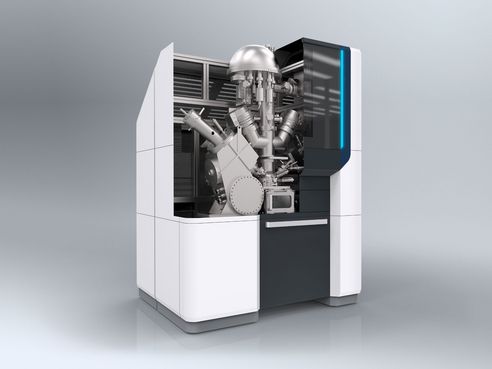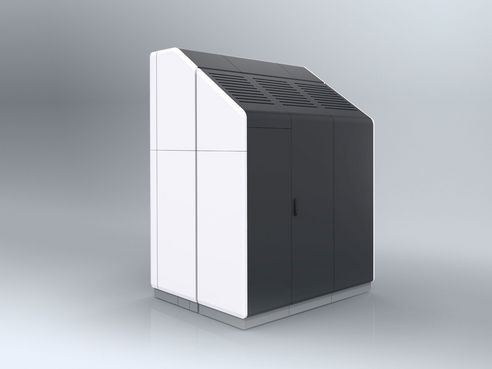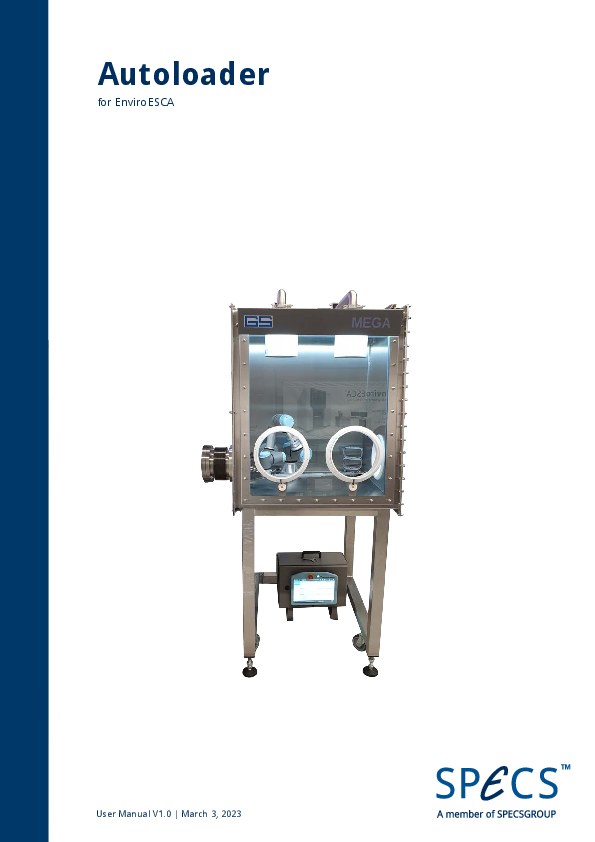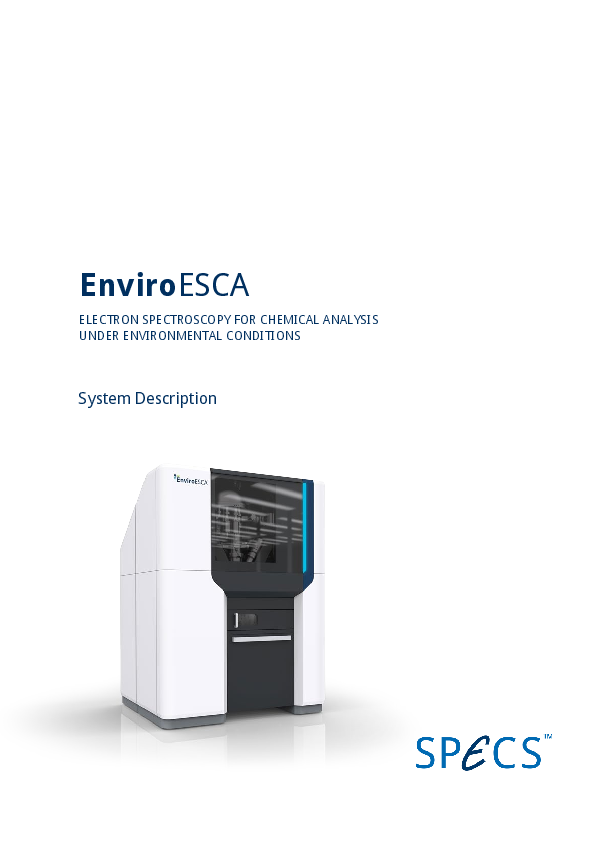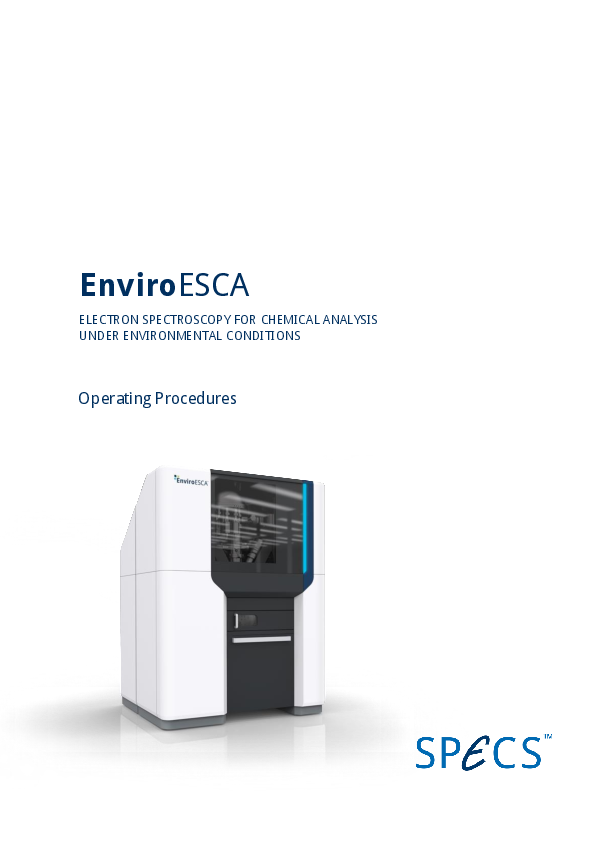 Detail
DetailEnviroESCA
Electron Spectroscopy for Chemical Analysis under Environmental Conditions Allows the Near Ambient Pressure (NAP) XPS Analysis of Catalysts, Liquids and Liquid-Solid Interfaces.
The SPECS EnviroESCA is a novel and smart analysis tool, that overcomes the barriers of standard XPS systems by enabling analyses at pressures far above UHV. EnviroESCA is designed for high-throughput analysis and opens up new applications in the fields of medical technology, biotechnology and the life sciences. It offers the shortest loading-to-measurement time on samples of all types including liquids, tissue, plastics and foils, powders, soil, zeolites, rocks, minerals and ceramics.
Voice of our Customer
Your web browser is deprecated
This could effect the presentation and some functions of our website.

